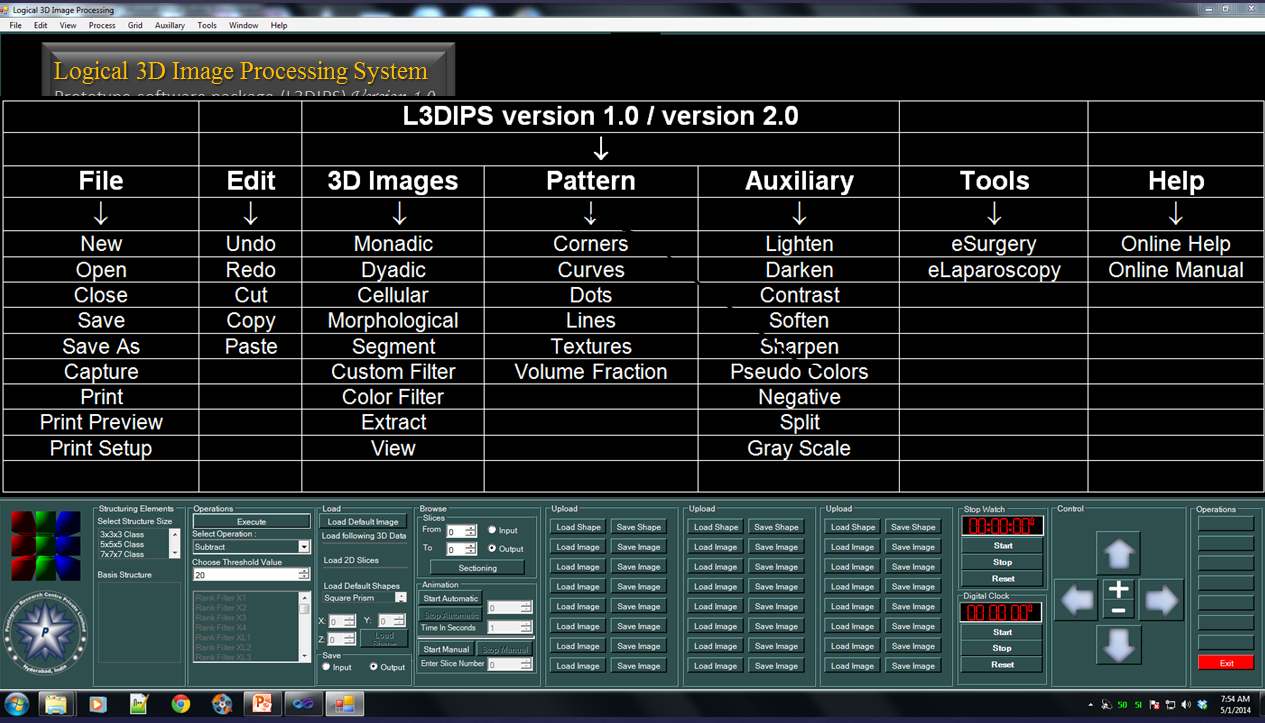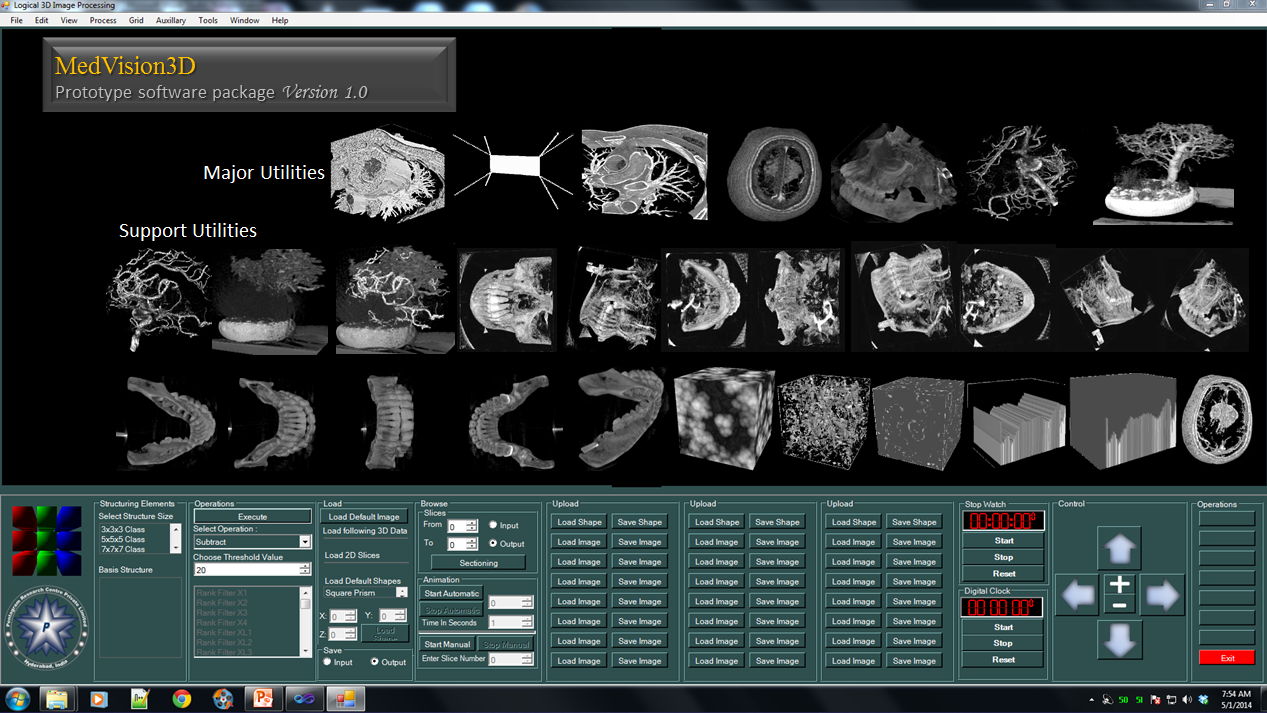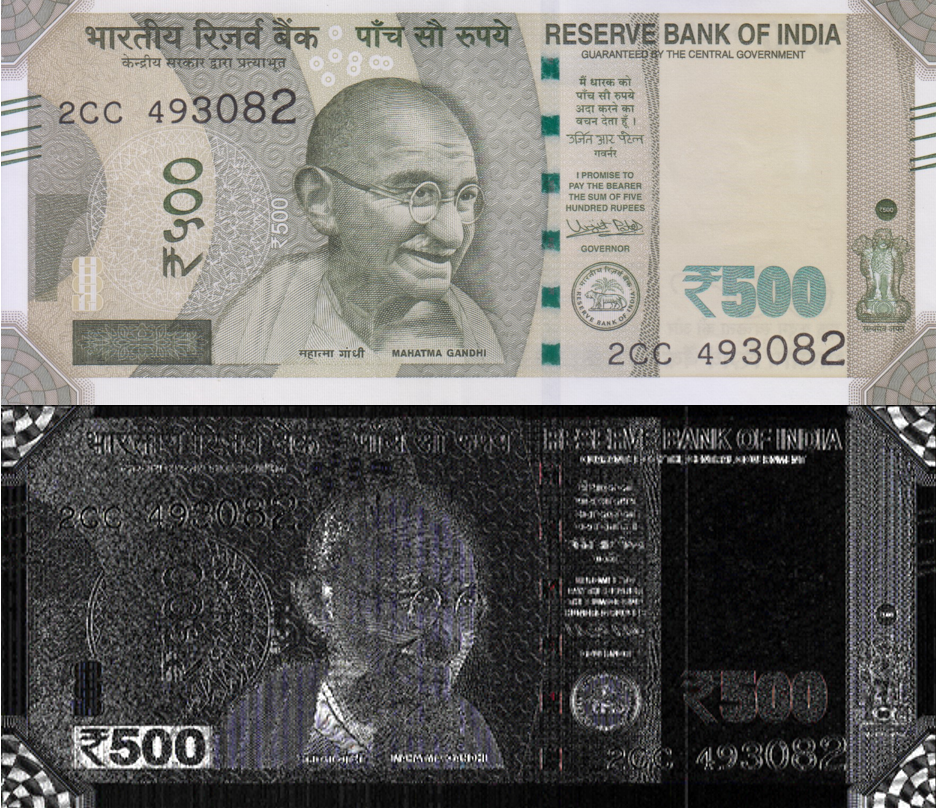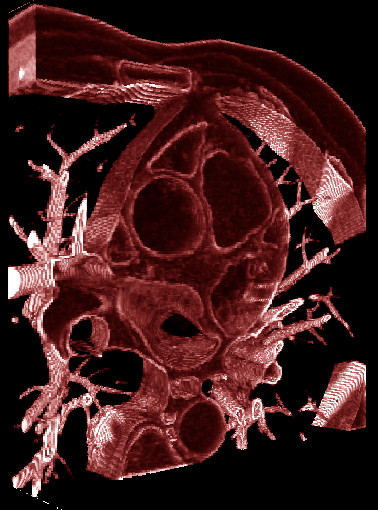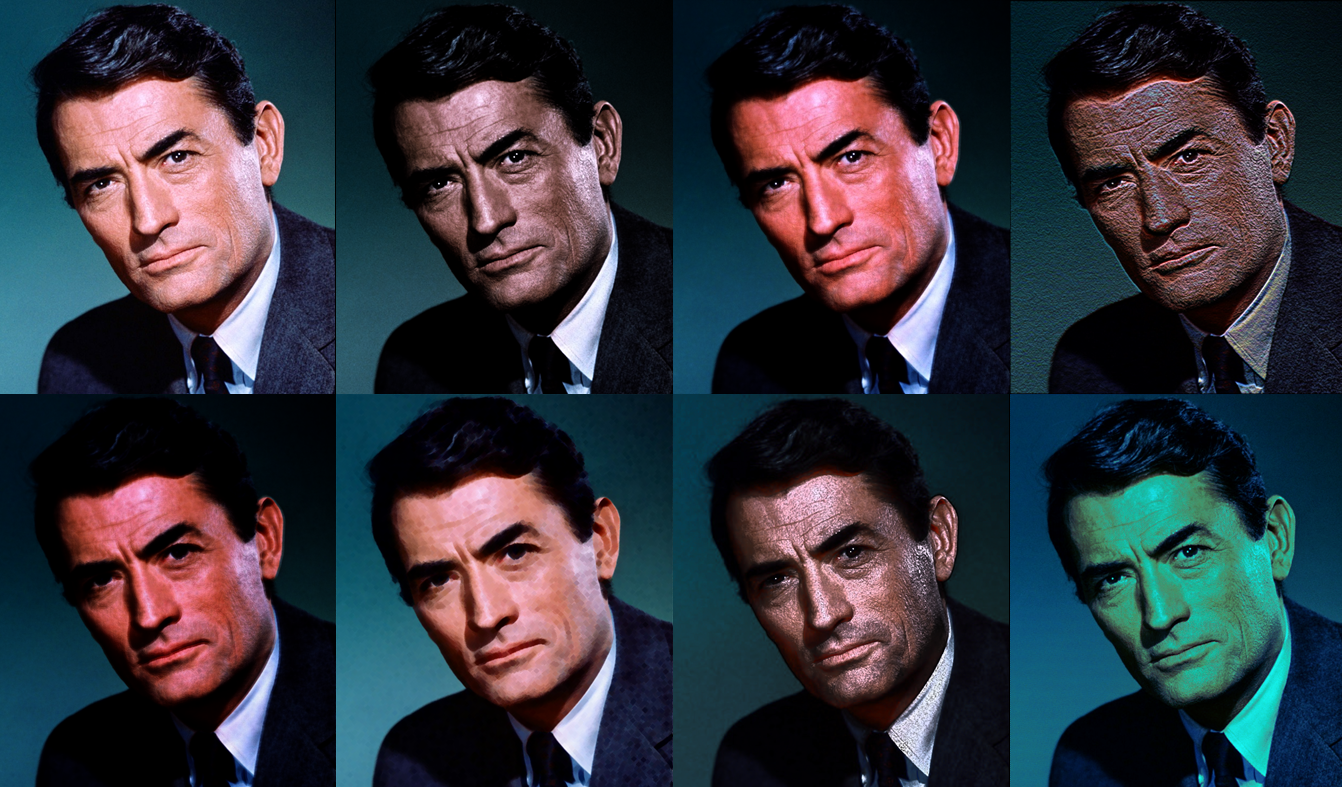|
|
Pentagram Technologies Maintained Under Section 59 of the Indian Partnership Firm Act, 1932 |
||||
|
An Indian Partnership company incorporated at Hyderabad, India in February 11, 2022 Previously known as Pentagram Research Centre Private Limited incorporated in February 27, 1997 |
|||||
|
Mission: Better Technology Through Better Research |
|||||
|
Home | People | Departments | Products | Projects | Publications | Research | Journal | Conference | Alliance | Contact |
|||||
|
|
|
||||
|
Speed and precision are the two major factors of immediate concern to any one interested in developing algorithms for mission critical applications. Traditional theories and paradigms have indeed been used for meeting such requirements. However, the desired speed and precision were not achieved till now due to the fact that the traditional algorithms are essentially numerical in nature. Efforts were made to develop non-numeric algorithms for various applications which would ensure speed and precision. The essence of the results due to such effects is the formulation of a theory called "Cellular Logic Array Processing". This paradigm has been evolved using the fundamental notions of von Neumann's Cellular Automata and Markov's Normal Algorithms. Research continues in various tenets of this paradigm. A number of fast algorithms have been developed to carry out desired operations on Signals and Images. Many products have been developed using such algorithms, among which the following three are of very high scientific and commercial values. Pentagram Research Centre Private Limited / Pentagram Technologies, India has plans to commercialize various products, tools, concepts and paradigms some of which are given in this page. |
|||||
|
Products |
|||||
|
Logical Image Processing System (LIPS 3.0) |
|||||
|
|
|
||||
|
This Engineering Version LIPS 3.0 has been developed using Visual C++ tools. Algorithms have been generated in the framework of Cellular Logic Array Processing. The software has been tested for its precision, speed and robustness. 2D images could be processed for extracting various spatial and spectral domain features. LIPS 3.0 consists of 189 routines and it provides facility for user driven macro generation. All extracted spatial features of a 2D image could be quantified provided it is scaled. Spatial and spectral domain fusion of two 2D images is possible using LIPS 3.0. |
|||||
|
Logical Image Processing System (LIPS 4.0) |
|||||
|
|
|
||||
|
This Engineering Version LIPS 4.0 has been developed using Visual C++ tools. Algorithms have been generated in the framework of Cellular Logic Array Processing. The software has been tested for its precision, speed and robustness. 2D images could be processed for extracting various spatial and spectral domain features. LIPS 4.0 consists of 189 routines and it provides facility for user driven macro generation. All extracted spatial features of a 2D image could be quantified provided it is scaled. Spatial and spectral domain fusion of two 2D images is possible using LIPS 4.0. |
|||||
| Logical Video Processing System (LVPS 1.0) | |||||
|
|
|||||
|
|
This Engineering Version LVPS 1.0 has been developed using Visual C++ tools. Algorithms have been generated in the framework of Cellular Logic Array Processing. The software has been tested for its precision, speed and robustness. 2D video images could be processed for extracting various spatial and spectral domain features. LVPS 1.0 consists of 189 routines and it provides facility for user driven macro generation. All extracted spatial features of a 2D video image could be quantified provided it is scaled. Spatial and spectral domain fusion of two 2D video images is possible using LVPS 1.0. | ||||
|
|
Logical 3D Image Processing System (L3DIPS 1.0) | ||||
|
|
|||||
| This Engineering Version L3DIPS 1.0 has been developed using Visual C++ tools. Algorithms have been generated in the framework of Cellular Logic Array Processing. The software has been tested for its precision, speed and robustness. 3D images could be processed for extracting various spatial and spectral domain features. L3DIPS 1.0 consists of 189 routines and it provides facility for user driven macro generation. All extracted spatial features of a 3D image could be quantified provided it is scaled. Spatial and spectral domain fusion of two 3D images is possible using L3DIPS 1.0. | |||||
| MedVision3D Version 1.0 | |||||
|
|
|||||
| This Medical Version MedVision3D version 1.0 has been developed using the utilities of L3DIPS 1.0 with Visual C++ tools. Algorithms have been generated in the framework of Cellular Logic Array Processing. The software has been tested for its precision, speed and robustness. 3D medical images could be processed for extracting various spatial and spectral domain features. MedVision3D version 1.0 consists of 189 routines and it provides facility for user driven macro generation. All extracted spatial features of a 3D image could be quantified provided it is scaled. Spatial and spectral domain fusion of two 3D medical images is possible using this software. | |||||
| MedVision4D Version 1.0 | |||||
|
|||||
|
|
|||||
| This Medical Version MedVision4D version 1.0 has been developed using the utilities of MedVision4D version 1.0 with Visual C++ tools. Algorithms have been generated in the framework of Cellular Logic Array Processing. The software has been tested for its precision, speed and robustness. 3D image sequences could be processed for extracting various spatial and spectral domain features. MedVision4D version 1.0 consists of 189 routines and it provides facility for user driven macro generation. All extracted spatial features of a 3D images in a sequence could be quantified provided it is scaled. | |||||
| Logical Pattern Generating System (LPGS 1.0) | |||||
|
|
|||||
|
This pattern generating package Logical Pattern Generation version 1.0 has been developed using the Visual C++ tools. Algorithms have been generated in the framework of Cellular Logic Array Processing. The software has been tested for its precision, speed and robustness. Varieties of patterns could be automatically generated using this software. LPGS version 1.0 consists of a number of routines under various categories and it provides facility for user driven pattern design. LPGS version 1.0 also provides a number of pattern processing routines which would enable the user to generate multiples of designs using a generated pattern. |
|||||
| Radar Information System (RIS 1.0) | |||||
|
|
|||||
|
This AI based commercial database version 1.0 is under construction and is being developed using information about various types of radar systems the details of which are extracted from books, journals, conference proceedings and other manufacturers manuals. Based on signal parameters, one can appropriately identify the corresponding radar system among the ones given in the database. Government agencies, researchers, faculty and students can make the best use of this software. |
|||||
|
Ground Truth Evaluator (GTE 1.0) |
|||||
|
Aerial view of a place Buildings and roads isolated Trees and other vegetation isolated |
|||||
| Ground Truth Evaluator (GTE 1.0) is a powerful tool which could be used for mapping and ground truth evaluation. People who are involved in preparing Electronic Order of Battle (EOB) records based on analysis reports obtained from ELINT and photo intelligence operations would find this tool very useful. | |||||
| Collision Avoidance System (CAS 1.0) | |||||
|
|
|
||||
|
|
|||||
|
Collision avoidance control strategy by an AMR in space With the three dimensional space being modeled as a discrete grid, an AMR faces a total of 1,31,072 threat zones while undertaking a mission in the discrete space. The restorative deviation method is adopted by the AMR to avoid different types of collisions. The following Яw|-provable control formulas are used by the AMR to avoid collision during its mission fight.
|
|||||
|
This AI based Collision Avoidance System (CAS 1.0) is under construction and is being developed using a state-of-the-art strategy for collision avoidance and instantaneous path fixing for an autonomous mobile system. The self guidance is carried out by an AMR by its control and command system that follows a set of well formed formulas in constructive predicate calculus. This technique could be installed in an autonomous mobile system be it a missile or an unmanned space vehicle or a simple robot driven car. |
|||||
| Target Seeking System (TSS 1.0) | |||||
|
|
|||||
|
Target Seeking System (TSS 1.0) is a prototype model developed for tracking an object of specific interest. The toy robot shown above is a vision based autonomous target seeking system and it actually tracks a target of specific interest and moves towards it. The robot gets the target coordinate information and control signals from the associated laptop via IP. The technique used here is due to an advanced research carried out in the areas of video image processing, pattern recognition and logical control. |
|||||
|
GeoVision3D |
|||||
|
AMR fitted with a ground penetrating radar and a real time radargram
|
|||||
|
Various views of processed images of the real time 3D radargram data |
|||||
|
This AI based commercial underground truth evaluation system that makes use of the in-house state-of-the-art software GeoVision3D and a field scanning GPS controlled autonomous Mobile Robot (AMR) that makes use of a ground penetrating radar and other vision, control and command and communication systems. This system would be of much use for underground oil, water, mineral exploration and mining. |
|||||
| Transaction Automation System (TAS 1.0) | |||||
|
|
|||||
|
Transaction Automation System (TAS 1.0) is an ATM system integrated with a built-in AI based software. This could be made available as a ready-made product for international marketing. TAS would be an important component in secured banking and ATM transaction since it provides the highest order of reliability using encrypted biometric techniques of fingerprinting, speaker verification and IRIS recognition. The algorithms used in developing various routines are due to an intensive research carried out in various areas related to biometrics and data encryption. |
|||||
|
Commercial queries can be addressed to Managing Director, Pentagram Research Centre Pvt Limited, 201, Venkat Homes, MIGH-59, Mehdipatnam, Hyderabad - 500 028, Telangana State or talk to us using our mobile number: +9849164747. |
|||||
|
Iris Analytics (IA 1.0) |
|||||
|
|
|||||
|
The overall accuracy of the Kernel based Principal Component Analysis (KPCA) and Support Vector Machine (SVM) based system 'Iris Analytics (IA 1.0)' is nearly 100% on CASIA IRIS database and precisely 100% on UBIRIS database. The performance is better in terms of recognition rate and recognition time than Multi Class SVM based technique and other existing techniques including Doughman algorithm. |
|||||
| Derma Information System (DIS 1.0) | |||||
|
|
|||||
| Image before plastic surgery Processed image before plastic surgery Image after plastic surgery Processed image after plastic surgery | |||||
|
|
|||||
| Test Case #1: Before and after makeup (Original Image) Test Case #1: Before and after makeup (Processed Image) | |||||
|
|
|||||
| Test Case #2: Before and after makeup (Original Image) Test Case #2: Before and after makeup (Processed Image) | |||||
|
|
|||||
| Test Case #3: Before and after makeup (Original Image) Test Case #3: Before and after makeup (Processed Image) | |||||
|
Derma Information System (DIS 1.0) extracts textural and structural information of skin surface in a digital image which are not visible to human eye. Medical professionals working in cosmetic dermatology, dermatopathology, immunodermatology, Mohs surgery and pediatric dermatology would find this software support system very useful. Moreover, cosmetic surgeons and beauticians and even any common person can use this software for facial makeup purposes. |
|||||
| Surgical Support System (SSS 1.0) | |||||
|
|
|||||
|
Part of human heart (MR image) Slice 0-30 dissected using SR1.0 Slice 30-60 dissected using SR1.0 Slice 60-90 dissected using SR1.0 |
|||||
  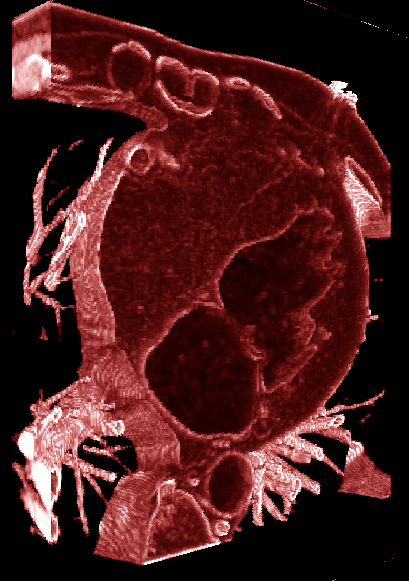  |
|||||
|
Slice 90-120 dissected using SR1.0 Slice 120-150 dissected using SR1.0 Slice 150-180 dissected using SR1.0 Slice 180-210 dissected using SR1.0 |
|||||
|
Important Note: A surgeon considers the following aspects before performing surgery on a patient (i) patientís age, (ii) previous medical reports, (iii) present pathological reports, (iv) present scan reports, and (v) present physical condition. Among the five aspects outlined above, present scan reports and visual inspection and understanding of the present physical condition of a patient play important role in deciding the surgical process. It is a known fact that a surgical process is irrevocable and a surgeon operates on a patient only on the patientís risk. The more the knowledge a surgeon has about the structure and morphology of the interior parts of the patientís body the less the risk the patient would have. |
|||||
|
SSS 1.0 would enable a surgeon to experiment with the scanned data of the patient several times before taking a final decision on the surgical process. This could be used for imparting practical surgical training to senior students, interns, physicians and surgeons. One need not wait for diseased human bodies for dissection in order to study various parts affected by ailments. On the other hand, MRI scanned images which are virtual bodies could be analyzed for such studies. This means Ďsaving of time and effortsí. |
|||||
| Jet Flame Analytics (JFA 1.0) | |||||
|
|
|||||
|
Aerojet Rocketdyne's hot-fire tests of first entirely 3D-Printed Rocket Engine http://www.americaspace.com/?p=63307 |
|||||
|
|
|||||
Two zones (shock diamonds) located in the flame with thrust vector using JFA 1.0Important Note: Rocket engines often feature a distinctive pattern of diamonds in their exhaust. These shock diamonds, also known as Mach diamonds, are formed as result of a pressure imbalance between the exhaust and the surrounding air. Because the exhaust gases are moving at supersonic speeds, changing their pressure requires a shock wave (to increase pressure) or an expansion fan (to decrease the pressure). The diamonds are a series of both shock waves and expansion fans that gradually change the exhaustís pressure until it matches that of the surrounding air. This effect is not always visible to the naked eye, though. We see the glowing diamonds as a result of ignition of excess fuel in the exhaust. As neat as they are to see, visible shock diamonds are actually an indication of inefficiencies in the rocket: first because the exhaust is over- or under-pressurized, and, second, because combustion inside the engine is incomplete. (Swiss Propulsion Laboratory) http://fuckyeahfluiddynamics.tumblr.com/post/88377595466/rocket-engines-often-feature-a-distinctive-pattern |
|||||
|
|
|||||
|
|
AR1, a 500,000 foot-pound thrust-class liquid oxygen and kerosene fueled booster rocket engine under hot fire test https://3dprint.com/51525/3d-printed-rocket-engine-injectors/ |
||||
|
|
|||||
|
Thrust vector located using JFA 1.0 (Note: There is no shock diamond found in the flame. This means the combustion inside the engine is complete) |
|||||
|
|
|||||
|
Akash VI test fired at Chandrapur, India |
|||||
|
|
|||||
|
Single zone located in the flame with thrust vector using JFA 1.0 http://www.livemint.com/Politics/l6EmZrm3Q3Vz8YVslehFDM/Budget-201617-Is-defence-production-still-at-the-heart-of.html |
|||||
|
Flame analysis is an important empirical study in the design of rocket engines. The function of a jet engine depends on the burning of the fuel. If the fuel is burnt completely, then it produces thrust vector. Absence of a noticeable thrust vector indicates malfunction of the rocket engine. Jet Flame Analytics (JFA 1.0) identifies various thermal zones in the jet flame image with its associated thrust vector. Missile technologists, rocket engine designers, flame dynamics experts would find this software support system very very useful. Moreover, researchers working in both supersonic and subsonic gas dynamics can use this software for evaluating effects of aerofoil sections subjected to wind flow in a tunnel. |
|||||
| Thermal Image Processing System (TIPS 1.0) | |||||
|
|
|||||
|
This Military Version TIPS 1.0 has been developed using Visual C++ tools. Algorithms have been generated in the framework of Cellular Logic Array Processing. The software has been tested for its precision, speed and robustness. 2D thermal streaming video could be processed in real time for extracting various spatial and spectral domain features. TIPS 1.0 consists of a number of routines and it provides facility for user driven macro generation. All extracted spatial features of a 2D video image could be quantified provided it is scaled. This software works reliably even on thermal images obtained in pitch dark using an IR camera or any other night vision camera. This could be customized for any hardware . |
|||||
| Single Tone Coloring System (STCS 1.0) | |||||
|
|
|||||
|
Single Tone Coloring System (STCS 1.0) converts a gray image, be it a photographic image or a pencil drawing, to a single tone color image without compromising on the shading pattern found in the image. One can create 16.4 million single tone color shaded images from any given gray image. For example, gray images of two legendary figures Ms. Coleen Gray and Shri. N. T. Ramarao are shown above along with certain single tone color versions. STCS 1.0 could be used to convert frames of a digital video at one stroke. Artists, especially people in the entertainment industry would find this software very useful. Multi Tone Coloring System (MTCS 1.0) is under development. |
|||||
| Pentagram Filters (PF 1.0) | |||||
|
|
|
||||
|
|
This product is dedicated to Gregory Peck, my favorite Hollywood actor - Prof. Dr. E. G. Rajan |
||||
|
Pentagram Filters (PF 1.0) is a set of image processing filters which were developed using advanced mathematical tools. The basic principle involved is 'Double Convolution'. First the given image is convolved with the unit sample response of one of the many two dimensional digital filters and the resulting image again convolved with the original image. Users can create their own image filter macros with the help of a wide range of custom filters provided in this package. |
|||||
| Voice Analytics (VA 1.0) | |||||
|
|
|||||
|
Efficiency of the speaker recognition system of VA 1.0 is 98% for TIMIT database and it is 96.5% for self collected database. Achievable spectral compression of voice samples was found to be about 75% and the efficiency of the system in recognizing the speaker was 94% and 93% respectively for both the databases. This system has potential applications in civil and military services where huge database is required for storing voice samples. |
|||||
| Genome Analytics (GA 1.0) | |||||
|
|
|||||
| Converting DNA sequences into digital signals opens up the possibility of applying signal-processing methods for analysis of genomic data. This kind of analysis reveals features of chromosome that would be difficult to grasp using standard statistical methods. Genomic information is coded in the form of letters A, T, C and G. The indicator sequences of a genomic sequence form the basis for genomic signal processing. GA 1.0 is a software that mainly deals with genomic signal processing. | |||||
| Crime Prediction Support System (CPSS) | |||||
|
This is NOT a readymade product. This is a continuous process of formatting and updating crime and other relevant data bases and of upgrading CRIMEINT system based on periodically and randomly targeted as well as overall surveillance of crime space. This process is as significant as that of Electronic Support Measures. CPSS has web enabled front end it works on reliable crime data bases and collateral information provided by public media and it would work on existing data and intelligence from police databases to identify patterns that human crime analysts might miss. The system can then use those patterns to determine where crime may be likely to occur next, and inform a police force where to best deploy officers and other resources. The idea isn't just to go there and arrest suspicious-looking people, but to use a larger police presence in an area to deter crime from happening in the first place. "This software would be uniquely intelligent in its capability to accurately discern intricate patterns of criminal behavior in seemingly unconnected events and then predict the probability of reoccurrence."
We propose to develop a Reliable, Robust and Fast Crime Prediction Support System (CPSS) using novel machine learning techniques that works on genuine crime data bases without causing any damage to the dignity of any ethnic society. We are confident that these precise analytics, when combined with the knowledge and instincts of experienced police officers, will create a formidable force to deter crime. Some of the applications of CPSS are: Border Security Measures, Cyber Crime Prediction / Prevention, Ethnic Crime Prediction / Prevention, Economic Crime Prediction / Prevention, Highway Crime Prediction / Prevention, Political Crime Prediction / Prevention, Juvenile Crime Prediction / Prevention, Sedition Crime Prediction / Prevention, Domestic Crime Prevention, Disaster Management Measures |
|||||




